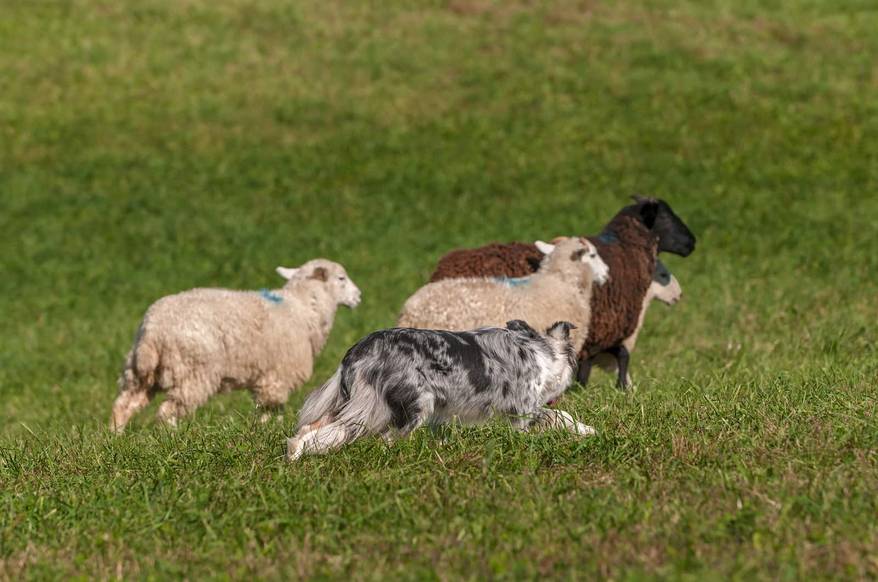
-
Find the right food for your petTake this quiz to see which food may be the best for your furry friend.Find the right food for your petTake this quiz to see which food may be the best for your furry friend.Featured products
 Adult Chicken & Barley Recipe Dog Food
Adult Chicken & Barley Recipe Dog FoodSupports lean muscle and beautiful coat for adult dogs
Shop Now Puppy Large Breed Chicken & Brown Rice Recipe
Puppy Large Breed Chicken & Brown Rice RecipeVital nutrients to support 5 essential building blocks for lifelong health
Shop Now Puppy Sensitive Stomach & Skin Salmon & Brown Rice Recipe
Puppy Sensitive Stomach & Skin Salmon & Brown Rice RecipeDelicious, highly digestible recipe, gentle on stomachs. Nourishes skin & promotes a lustrous coat
Shop NowFeatured products Kitten Chicken Recipe
Kitten Chicken RecipeVital nutrients to support 5 essential building blocks for lifelong health
Shop Now Adult Urinary Hairball Control Chicken & Rice Recipe Cat Food
Adult Urinary Hairball Control Chicken & Rice Recipe Cat FoodActively supports the health of the whole urinary system
Shop Now Adult 7+ Chicken Recipe Cat Food
Adult 7+ Chicken Recipe Cat FoodSupports energy level and beautiful fur in mature cats
Shop Now -
Dog
- Dog Tips & Articles
-
Health Category
- Weight
- Food & Environmental Sensitivities
- Urinary
- Digestive
- Joint
- Kidney
-
Life Stage
- Puppy Nutrition
- Adult Nutrition
- Senior Nutrition
Cat- Cat Tips & Articles
-
Health Category
- Weight
- Skin & Food Sensitivities
- Urinary
- Digestive
- Kidney
-
Life Stage
- Kitten Nutrition
- Adult Nutrition
Featured articles Pet Food Storage Tips
Pet Food Storage TipsDiscover how and where to store your dry, as well as canned, dog and cat food. Learn how to find the "best before" dates on all Hill's pet food packaging.
Read More The Incredible Science Behind Your Pet's Microbiome
The Incredible Science Behind Your Pet's MicrobiomeLearn what a pet's microbiome is, how it contributes to your pet's gut & overall health, and why nutrition is important in maintaining healthy microbiomes.
Read More Water
WaterDiscover why water is the most important nutrient for your dog or cat to live a healthy life. Find out how much water your pet should consume each day.
Read More -


Are you curious why your dog loves to chase squirrels or rabbits around the house or park? If outings with your dog are chaotic because of his tendency to chase other animals, or if your sweet pup has ever horrified you by bouncing up with a wiggling rabbit in his mouth, you might have a dog with a strong prey drive. Here's everything you should know about prey drive in dogs and what you can do to manage it in your pooch.
Why Does My Dog Chase Squirrels?

While dogs have evolved away from being predators in the same way that wolves are, most have retained the ability and desire to hunt. Thanks to breeding, this drive to hunt manifests itself in different ways in different breeds.
Dogster explains that the prey drive involves five different behaviors: searching, stalking, chasing, biting to grab and biting to kill. Among the dog breeds with a high prey drive, these behaviors manifest differently according to breed. Herding breeds, for example, have a strong chase instinct, while hounds like to stalk and flush out prey.
Terriers originally bred to hunt and kill rodents and other small game still possess a strong drive to do so. Of course, not all dogs have a strong prey drive, and many dogs are content to express whatever mild predatory instincts remain through play, such as chasing a ball or shaking the stuffing out of a toy.
Prey Drive vs. Aggression
While a strong prey drive can sometimes look like aggression — especially to your dog's prey — there is a key difference that is important in understanding your dog's behavior. Dog aggression is driven by strong emotions, such as fear, says Positively, whereas prey drive is instinctive.
Another key difference is that aggressive dogs desire to increase distance between themselves and the object of their aggression. When operating under the influence of their prey drive, dogs are seeking to get closer to their target. This is good news for dog parents of dogs with strong prey drives, because it means that since there isn't an emotional component to overcome, prey drive is often easier to manage than emotion-based aggression.
Can a Strong Prey Drive Lead to Behavior Problems?
A strong prey drive in dogs can be a problem if it means your dog chases anything that moves. While this can be fun when you're up for a game of fetch, it's not such a good time when you're out for a walk and your pup tries to tear after every squirrel, rabbit or cat that wanders into his peripheral vision.
If not properly restrained, dogs with a strong prey drive may also engage in dangerous behavior, such as chasing cars or attacking venomous snakes, says Dogtime, and your dog may be so focused on his prey that he ignores your commands or refuses to come when called. Unfortunately, small pets, such as rodents, birds, cats and even small dogs, may not be safe around a larger dog with an overactive prey drive.


Tasty Tips
Can Prey Drive in Dogs Be a Good Thing?

Prey drive also has a positive side, however. The term prey drive primarily refers to a dog's level of excitement or motivation to perform a task involving hunting-related behaviors or going after an object, says The Bark. This drive can be immensely useful in training dogs for agility or for military and police K-9 jobs.
It's also the reason herding dogs are good at herding livestock and why hunting dogs are good hunting companions. In a domestic setting, your dog's prey drive might make him more playful and active, and also might make him helpful in keeping down the unwanted rodent and pest population, depending on how his prey drive manifests.
Which Breeds Have a Strong Prey Drive?
Generally speaking, dogs bred to either hunt or to herd have the strongest prey drives. These include dog breeds in the herding group, such as Australian shepherds and border collies; terriers such as the Airedale and the bull terrier; hounds such as beagles and greyhounds; and sporting group breeds that include retrievers, spaniels and pointers.
Some working group breeds, such as Siberian huskies or boxers, although not specifically bred for hunting or herding, nevertheless possess a strong prey drive and may require close supervision around smaller pets.
Managing Your Dog's Prey Drive
While certain aspects of prey drive in dogs range from somewhat annoying to borderline out of control, most of the time a strong prey drive is relatively harmless. In these cases, to curb the annoying behaviors, engaging your dog in play that involves chasing, catching and retrieving, like playing fetch with his favorite tennis ball, can provide a healthy outlet for his instincts.
Involving your pooch in agility sports is another positive and fun outlet for your pup's prey drive. However, if your dog's prey drive leads him to engage in behaviors that compromise either his own safety or that of other animals, you may need to take additional steps to protect your dog and your neighborhood from his prey instincts. In addition to engaging your dog in sports and play, the dog training site Positively recommends the following:
- If possible, keep your dog confined to a fenced-in area of your yard. Otherwise, never allow your dog outside without a leash.
- Always use a leash when walking your dog in public areas.
- Only allow your dog to walk off-leash in areas where there are no dogs, cats or children present, and do so only after your dog learns to reliably come when you call.
- Never allow your high prey instinct dog to interact with children or other dogs or pets without close supervision. If you have child or dog visitors, it may be necessary to confine your dog to another room or keep him on leash even while inside.
- Be sure his rabies vaccination is up to date and that you have documentation that he received it. If your dog is bitten by a critter he tries to chase, that will be one less thing you'll need to worry about.
While we often like to think of our dogs as children on four legs, the fact remains that they possess animal instincts that can make them unpredictable. While your dog's prey drive has a lot of positive aspects, you should learn how to manage it as early as possible for his happiness and safety.


Jean Marie Bauhaus is a pet parent, pet blogger, and novelist from Tulsa, Oklahoma, where she usually writes under the supervision of a lapful of fur babies.
Related products

Vital nutrients to support 5 essential building blocks for lifelong health

Supports lean muscle and beautiful coat for adult dogs

Delicious, highly digestible recipe, gentle on stomachs. Nourishes skin & promotes a lustrous coat

Supports healthy joints, lean muscle, and beautiful coat for large breed dogs
Related articles

Understand the role that Omega-6 and Omega-3 fatty acids play in your dog's overall health, and how you can ensure they are getting enough.

Proper nutrition for your pregnant or nursing dog is vital to her and her puppy's health. Learn what you should do provide her with the proper nutrients.

Large and giant breed puppies have different nutritional needs than other dogs. Learn how to provide the special care they need to grow up big and strong.

Learn about Hill's puppy food and the nutritional benefit & high quality ingredients that it contains for your pup.

Put your dog on a diet without them knowing
Our low calorie formula helps you control your dog's weight. It's packed with high-quality protein for building lean muscles, and made with purposeful ingredients for a flavorful, nutritious meal. Clinically proven antioxidants, Vitamin C+E, help promote a healthy immune system.
Put your dog on a diet without them knowing
Our low calorie formula helps you control your dog's weight. It's packed with high-quality protein for building lean muscles, and made with purposeful ingredients for a flavorful, nutritious meal. Clinically proven antioxidants, Vitamin C+E, help promote a healthy immune system.

